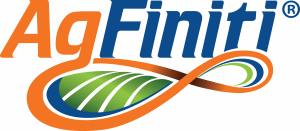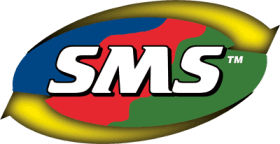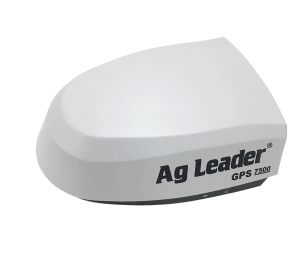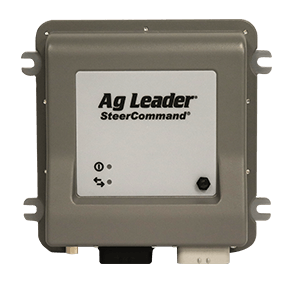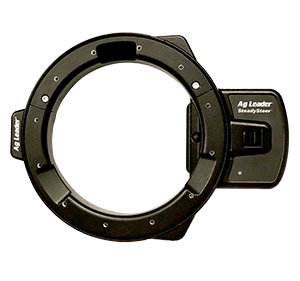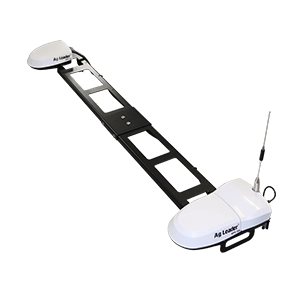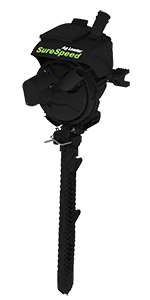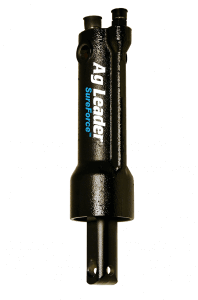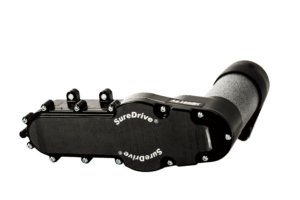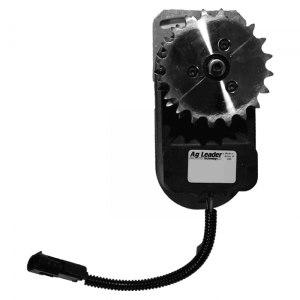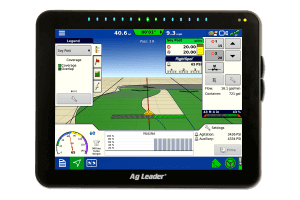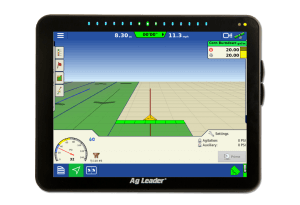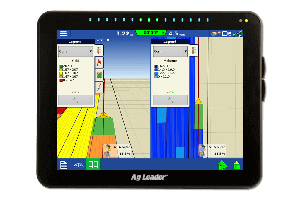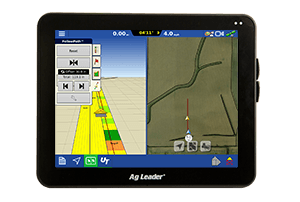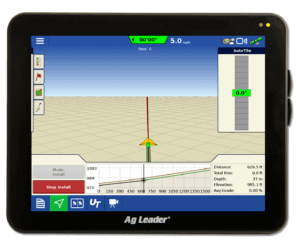Growing Globally - Ep. 4
While Ames, IA may be home to the Ag Leader headquarters, it remains an international company with 4 offices around the world. Hear from two of our international representatives, Paul and Doug about international precision ag adoption and their predictions of where it may be headed in the future.
International Panel Background
Russ Morman 0:57: Today we’re going to be discussing Ag Leader solutions for farmers outside of the Midwest. We kind of talked about this a little bit off air – how, if you want to get views here, in the United States, for anything that Ag Leader puts out on social media, it is either something from a farm practice that is not typical in the United States or it’s a 40-year-old tractor with brand new technology. Now those seem to get a lot of views. So today I’m going to take the opportunity, some folks I haven’t got to see in a while. We’re going to talk a little bit to Paul Rose, who is a territory manager in our European office and Doug Amos, who is the sales manager for our Australian office. I just kind of want to dive in and, first of all, say thanks for joining us and just get a little bit of feel for, one, your background to start with and, two, learn a little bit about the differences in some of the farming practices that you guys have seen both traveling the US and obviously your farming practices back home. Heck, I know, Paul, you lived in the US for a few years, so you guys are both familiar with a lot of the ag practices here in the United States.
So first off, Paul, I want to start with you. Give me a little bit of background about yourself, where you’re from, your ag background, your career before Ag Leader, how you came to Ag Leader, your responsibilities and the regions that you cover. And then, Doug, I’m going to ask you the exact same questions. So, Paul, feel free.
Paul Rose: Thank you very much, Russ. I wanted to say first that it’s really good to be back here in Ames, after something like two and a half years break because of obviously the pandemic and everything else. But, so happy to be back in Ames and the headquarters of Ag Leader. It’s been a great opportunity to meet all our international guys, Doug, and everybody else that’s here. So, it’s an exciting day for me, if I’m honest.
Russ Morman: Yeah, I can definitely say the last time I saw the both of you I wasn’t in my home country either. It was 2019 Agritechnica.
Paul Rose: That is correct. So, yeah, I guess I’ll start at the beginning. He wanted to hear my background. So essentially after graduating agricultural college in the UK, and that was in 1994, I came out to America to join the harvest crews.
So, I essentially did what they used to call the 2,000-mile harvest. And back then, my sole goal was to drive the biggest equipment I could find and America was the place to do that in those days. And I have to say, it did not disappoint. I spent all that year basically driving combine harvesters through the Midwest all the way up to the Canadian border. And it was a great experience. It opened my eyes to the world if I’m honest because I hadn’t traveled much at all previous to that experience. And that ultimately led to what I do now. Because, after the harvest crews, I had a brief job in Florida. I met some guys there and then I went home for a few months, late ’94 until I think around summer of ’95, and got an invitation to come back to the US to work on a big farm in Kentucky.
So, it took a little while to get used to the Kentucky drawl but working on that 14,000 acre farm for Miles Farm Supply, as it was then, is also where I got my first introduction to Ag Leader.
Russ Morman: I didn’t know that it was Miles Farm Supply. That’s the first time I remember hearing you say that.
Paul Rose: Yep. Miles Farm Supply. And you probably remember, Russ, but they were an early customer of Ag Leader. Something like 20 motor systems with the satellite receivers in that big shoebox deal.
Russ Morman: Yes. I do remember that.
Paul Rose: Yep. So, there was a guy there, actually, you might also remember, called Steve Bice. He was a precision farming specialist for the company. And I got on well with him and he showed me how to use the yield monitor, the YM 2000. And of course, compared to today’s monitors, it was an interesting one. You had to press a lot of buttons to get anywhere. It wasn’t these big, touchscreen displays. It was that little sort of LED, calculator type display and right-hand arrows, up and down arrows, and lots of button pressing.
Russ Morman: A whole big page that unfolded, that told you left, right, down, to get to here. Yes, I do remember that, and I am so thankful that we have moved beyond that. So, you mentioned that when you were in Kentucky, you first became aware of Ag Leader. So then fast forward, how did you come to join our family?
Paul Rose: Yes, so if we fast forward to, well, 2006? So, I left America in 2004. I worked here for essentially 10 years, on and off. Trained as an agronomist in America. Not many people know that.
Russ Morman: I did not know that.
Paul Rose: So, I did my, CCA examiner, examination, sorry. And, yeah, I was an agronomist for six years before coming back to England in 2004. And then I started working for a Trimble dealer and I only did that for a couple of years. And of course, 2004 is when we saw the huge expansion of Ag Leader due to the Insight Display.
Russ Morman: Yes.
Paul Rose: And that was really popular in the UK and parts of Europe as well, I have to say. But during my time at Trimble, I had traveled to America to one of their conferences in Denver, I think it was, and met a few people there from Ag Leader. Then, met a couple of Ag Leader guys who were traveling through Europe at a show in the UK. Namely, Dave King and Jeff Bentley. Now, unfortunately, the stories of that particular trip cannot be spoken about on this particular podcast?
Russ Morman: Well, we are actually probably going to work on an after-hours podcast at some time that will involve cigars.
Paul Rose: Yep.
Russ Morman: Scotch, beer, and some fine wine.
Paul Rose: I’ll look forward to it, can we fast forward to that?
Russ Morman: Well, the day is young. So, I met Dave King there for the first time, I think, properly anyway. And, we had a quick chat and, you know, that was it. It was nothing more. It was, you know, a quick beer and a chat, and what have you.
But then, 2006, it was probably December time, I was driving back home. It was late afternoon. It was dark because it was in the winter. And I got this international call, had no idea who it was, and thought that’s unusual. I was almost not going to answer the phone because why would somebody be calling me from international?
Russ Morman: Exactly.
Paul Rose: Anyway, I answered it. It was probably the best decision of my life. And long story short, Dave King offered me the job to be the European Sales Manager.
Russ Morman: So, you, if I remember right, were the first employee for Ag Leader outside of North America?
Paul Rose: That is correct. At that point, I had an employee number of J001. They had to set up something special for me because, obviously, I wasn’t a US employee. And so, nobody believes me when I say this, but the first office outside North America was actually my house.
Russ Morman: There you go.
Paul Rose: Now, to be honest, it wasn’t actually an office. It just had to be a registered address for Ag Leader so that they had something in Europe so that they could pay me. And, obviously, being paid was a bonus of the job, of course.
Russ Morman: It’s usually a prerequisite for a job. Yeah.
Paul Rose: Absolutely. So, 2007, I think February or March is when I started for Ag Leader. Now those that are listening with a good brain for figures will realize that that’s 15 years, that I’ve now been with Ag Leader.
Russ Morman: Man. Doesn’t seem like it. The time just kind of flies.
Paul Rose: Where has the time gone?
Russ Morman: That’s right.
Doug, same question to you. Give me a little bit about your background, you know, where you’re from, before you started at Ag Leader, how you kind of came to join the Ag Leader family.
Doug Amos: Goodday Russ, and a pleasure to be here.
Just reiterating what Paul said, coming in here after two and a half years and the travel opening up and the whole world being opened up again has just been fantastic. I’ve taken the opportunity already since being here to take a couple of days and take a drive around. We took a couple of days when we drove. We landed in LAX, drove all the way up to San Francisco and then flew across to Ames. So, really happy to be back.
But to your question, where am I from? Australia, in a little country town called Echuca, which is a small farming community right on the border between New South Wales and Victoria. And just down the road from there is where I actually got my start with Ag Leader.
So, I worked for a company called GPS Ag, which is about an hour away from where I currently live now, in a town called Bendigo. And they were actually the auto farm distributors in Australia. And they had partnered with Ag Leader to do the display and the steering system back in those days.
Yeah. So, I worked with them, and I started in Tech Support, like a lot of people did.
Russ Morman: Yep.
Doug Amos: Nothing wrong with that, and then moved up from there. I became the Product Manager and Trainer for GPS Ag. And got the opportunity to come across, after Ag Leader had started in Australia. So, they’d been only operating in Australia for about two years. And the guy who Ag Leader had employed over there at the time approached me and he said, look, you’re doing great work, why don’t you come over and join us full-time? And so, I did that, and, like Paul said, best move I ever did. So, coming across, working for Ag Leader these last nine years now, fantastic. Really enjoying it.
Russ Morman: It’s a lot of fun. Isn’t it?
Paul Rose: Bendigo must be the center of the universe. Even I’ve been to Bendigo. I must have met your old boss when I was over there.
Doug Amos: Quite possibly. So, Bendigo is actually the center of Victoria. But we won’t call it center of the world.
Russ Morman: Oh, man. All right.
Doug Amos: But, a lot of the employees that were the GPS Ag dealer network are now the Ag Leader network in Australia. So, GPS Ag essentially didn’t fold, but they handed all the dealerships over to Ag Leader and we were more than happy to take them on, of course. And they’re part of the family, as most of the dealers are around the world. It’s very much a family orientated business.
Russ Morman: I would say that’s definitely true. I can talk about the relationships you make with this, sometimes folks come and go, but it does seem like it’s a small family. They never go far.
Doug Amos: Absolutely.
Differences in Production Ag Across the World
Russ Morman 10:34: So, got to know a little bit about you guys. A large part of the audience for this podcast is going to be probably US or North America growers. But you guys have both spent a bit of time here. Paul, years. Spend a couple minutes talking about the differences in production agriculture, meaning some things that if somebody heard, would be like, oh, well, I didn’t know that. Doug, you want to go first on that?
Doug Amos: Sure. So, the real difference between North America and Australia is we don’t grow our crops in summer. We actually grow them in winter. So, it’s winter down there at the moment. And so, we’ve got all our cereals in because in Australia that’s when it rains, during the winter. Rain, as we know, is what makes crops grow. So that’s universal. That is one of the main things.
So, we have summer crops as we call them. Most of those are irrigated. So, during the winter, when the dams fill up, we can pull off those dams, so we can irrigate our summer crops. And our predominant summer crop is cotton in Australia. So, that’s the main difference, we’re in the same season as you, even though we’re out of season.
Russ Morman: Very good. You don’t really think about that. So, you’re wearing a totally different set of luggage coming up here than you would’ve if we were traveling down to your home. So, very nice.
Paul, same question to you. So, let’s say I’m just a guy asking you questions about production agriculture back home, or even in some of the areas that you cover. You cover everything from South Africa to just, all over the darn place. What are the biggest differences as you drive down the roads here, versus what you’d see in your area?
Paul Rose: That’s a very good question, Russ. I do cover a wide geographical area, from South Africa to Western Europe. Even when I first started the job, I covered out east, Ukraine, Russia, and all those places. So, to digress slightly. One of the things I’ve really enjoyed about the job is the ability, the privilege, actually, to be able to visit some of these countries and these farmers. And learn about their practices and how they use Ag Leader and to perhaps, in some cases, offer advice on how they can expand their fleets and their Ag Leader equipment to help them with their farming operations.
Russ Morman: Absolutely.
Paul Rose: But I want to clarify this. When I say here where we are today, in Ames, Iowa, I’m going to refer to that as the Midwest. So, corn and beans. You can drive for hours, miles, kilometers, whatever you want to call it. And all you will see is corn and beans, maybe the odd alfalfa field. So, the biggest difference for me based on that is the diversity of agriculture in my region. So, you look at South Africa, that is actually very similar to North America. They grow a lot of row crops. And then you come up in somewhere, let’s say, the Netherlands, which is hugely intensive. They’re growing potatoes, vegetables, flowers, tulip boards, all that sort of thing.
And particularly in the Netherlands, the value of the ground there is so high that they have to produce a high value crop in many cases. So, tulips and potatoes are an example of those high value crops. And a family will farm let’s say 80 or a hundred hectares or approximately 250 acres, and a family will make a living from that.
Russ Morman: Wow.
Paul Rose: Particularly if they’re growing tulips and things like that because the output is very high on a per hectare basis. To buy land in the Netherlands is around 30, 40,000, euros per hectare. But then, you know, the income from a tulip crop is also very high.
Russ Morman: Yes.
Paul Rose: So, it kind of helps to pay the bills, if you like, over those years. So, to me, that’s probably the biggest difference.
I would also say, in Ag Leader’s favor, the diversity of the equipment that we use in Europe. You know, over here, I don’t want to upset anybody, but to me it seems it’s mostly John Deere and Case equipment, for tractors and combines at least. Obviously, AGCO has quite a big footprint here and then Kinze planters. But from my perspective, there’s not a lot else in the main manufacturers of equipment in North America.
Russ Morman: I can definitely agree with you on that. Going back to Agritechnica, that was one of the larger shocks for me. The number of companies that manufactured similar products, for lack of a better term.
Paul Rose: Yeah.
Russ Morman: It wasn’t just five leading manufacturers. It was a hundred manufacturers in 35 buildings or whatever. It was completely amazing and mind boggling at the same time, to be able to think that some aftermarket companies have to be able to make stuff. Again, which is why ISO has, become so popular with things like that.
Paul Rose: You’re correct. And the other thing about that is, of course, a lot of farms end up with really mixed fleets.
Russ Morman: Yeah.
Paul Rose: And, you know, I’m going to sound like a salesman because I am, that plays into our favor, because if you have a farm with four or five pieces of equipment, all with their own displays and everybody has got to learn how to use those displays. Well, you stick an Ag Leader InCommand in there and presto. You’ve got the same display across all those different tractors and machines.
Russ Morman: Yep.
Paul Rose: And that actually plays into our hand quite well if I’m honest.
Doug Amos: Yeah. I’ll double it down on that as well. In Australia, it’s exactly the same. We’ve got the diversity of the crops across the country and then the diversity of the equipment as well.
And while most of the equipment might be imported, except for some of the implements, most of the tractors are all imported. We still get all the different brands. So, whether it’s a Flint, a Case or a John Deere, we’ve got them all. And on the ISOBUS side of things, when I look at my region, what we’re doing is predominantly Australia and New Zealand.
When we look at the equipment in Australia, it more closely correlates to what you guys have got here in America. And the New Zealand stuff correlates to what comes out of Europe. So, we have this real crossover. So, they do a lot of ISOBUS and a lot more European type implements and control in New Zealand, than they do over here in Australia.
Past, present and future of precision agriculture technology
Russ Morman 16:01: Wow. Okay. I learned something today then. I did not know that. All right.
So, part of the reason we’re starting off here, Ag Leader’s celebrating 30 years this year. I’ve been with the company for over 25 years. When I started, we had a simple yield monitoring product called the YM 2000. We had just introduced a GPS system called the GPS 2000. And we had a very simple rudimentary mapping program called Precision Map. So, I’ve been fortunate enough to see that evolve as we’ve gone along from year to year, all the way up to this very well-rounded system now with InCommand and all the steering products that we offer.
So, going back to the beginning of your guys’ career, where did precision ag start? Was it guidance? You know, where I grew up, on our farm, we started off with a yield monitor, years before we even had a GPS system on it. So, that was where it started for us. But even in different regions of just the United States, a lot of precision ag was driven by guidance stuff.
And so, we started off with Paul last time. Doug, I’ll start with you, where did precision ag start in your area and where do you see the focus at, in the future?
Doug Amos: Yeah. Well, I was born in a little town called Moree, in Northern New South Wales. And the first auto steer system in Australia was about 50 kilometers away from there. It was a Bayline system, originally.
Russ Morman: Yep.
Doug Amos: That was even before the auto farm really took off in Australia. So, that was sort of my introduction from a farming perspective and our personal farm. And I can tell you a story about one of the cotton farms at Moree, they went to an auto steer system, which they paid an exorbitant amount of money for, of course. And all it did was go a straight line back in those days. But once they’d redone one of the paddocks, they got eight extra rows of cotton out of one.
Russ Morman: Oh, wow.
Doug Amos: So just by going to an auto steer system, they changed the farming practices around the area where I grew up. But my personal, introduction was when I moved away from the family farm, and it was eventually sold, I did a few other jobs, but I came back in when I was working with GPS Ag. And it was one of the things back then. We were going through a bit of a drought and one of our marketing lines was, when things are tied, this is when you need to be super-efficient.
Russ Morman: That’s right.
Doug Amos: So, we were selling off the back of that. Purely to make farms more efficient, given that they had drought, so, low production and obviously low cost at the time as low grain prices. And so, getting more efficient in the paddocks really helped.
Russ Morman: Yeah. I mean I’ve talked to guys and at the end of the day, we’re not going to be making any more farm ground. So, you’ve got to be more efficient with what you’re covering. And that’s so understandable how somebody could start off with a guidance system, it would just make so much sense. It just so happened that in my area here the yield monitor, came before the guidance system. And so, it was what we had.
You know, we’ve just introduced RightSpot. That seems to be a product that would fit your area very, very well. But where do you see the focus of precision ag being in the next couple years? I won’t ask you five or 10 years because, shoot, I’d have been wrong about everything. I’m glad I’m not a betting man when it comes to that.
Doug Amos: I couldn’t agree more. Where will we be in 20 years? That’s you know, the million-dollar question.
Russ Morman: With any luck on a beach with a cigar, but we’ll see.
Doug Amos: I’ll join you there.
I think agriculture is moving very much down the data path in Australia. So more and more, the farmers down there are taking the data that’s available to them. Whether it’s straight elevation data off their paddocks because they’ve got coverage maps. Or they are the yield maps becoming more and more important to a farmer. And regardless of the crop, we need to know what’s happening. What is our output off those paddocks, so that we can address?
Russ Morman: Yeah, the yield map is your report card at the end of the year.
Doug Amos: Absolutely. A hundred percent the report card. And without it, we’re pretty much flying blind for the next season before we even start. So, what granddad used to do and worked last year, so we’ll do the same thing this year.
Russ Morman: Yep.
Doug Amos: That’s a farming practice of the past now. And more and more, you’ve got to have this report card, so you know, and you can plan for what’s coming up in the next year. And while we can’t control the weather, we can certainly control all our inputs. And that gives us a very good head start.
Russ Morman: That’s a great point. I know we’ve certainly spent a lot of time here at Ag Leader working on the ease of the data. Making it flow smoothly from the grower to the guy doing the data analysis, display to display, all of this stuff.
And so, if the data, like you say, is very difficult to get to, very difficult to use, nobody’s going to use it. And again, as you said before, it’s great when times are good, it’s probably even more important when they’re not as good. Because again, you’ve got to take what you’ve got, and be efficient with it. Because at the end of the day, as much as, farming might be family oriented, if you’re not profitable you’re not going to be there for very long.
Doug Amos: Farming’s a business.
Russ Morman: That’s right.
Doug Amos: Whether you’re a corporate or a family.
Russ Morman: Yep.
Doug Amos: It’s a business.
Russ Morman: That’s right.
Doug Amos: You have to make a margin so that you can live.
Russ Morman: Yep. And I think the data is a great way to not only judge that but make improvements.
Doug Amos: And with the RightSpot, I think that’s going to be one of our strengths. Taking a product like a conventional sprayer, we’re going to turn that into a really precision sprayer. We’re going to be saving on input costs for whatever crop you are going to be growing and that is going to increase your margin. It’s as simple as that. The mass will be done, it’s already there. We can see it. Increasing the margin is what’s going to pay our bills and pay us in the future. When I say us, I mean the family farm.
Russ Morman: Yep. And just like you said that data’s going to go to prove all that.
So, Paul, same question to you. Tell us where you saw precision ag get started, where it’s been going, and in the area that you manage, what is going to be important in the future?
Paul Rose: Good question, Russ. I mean, my area being so diverse, I’d have to say that in some areas, I’m going to pick out the UK and South Africa, I would say that yield mapping was probably the first thing that took off in those countries.
Russ Morman: Mm-hmm.
Paul Rose: Particularly in South Africa. We sold a huge number of yield monitor systems down there and they were used properly. They weren’t just thrown on the combine and then forgotten about. I think the challenges we faced back in those days, of course, was it wasn’t as easy to process the data in those days and make a real decision out of it.
Russ Morman: Agreed.
Paul Rose: And then what do you do with that decision? I mean, it’s easy to say now to make variable rate maps for N, P, and K. But you know, I’m going back, 20 years let’s say, and it wasn’t easy. Because, as I alluded to before, when working in North America in the late nineties and early two thousands, I was actually doing variable rate applications there for Miles Farm Supply.
Russ Morman: Oh, wow.
Paul Rose: And when I say that, I would go out do the soil sampling, send it off to the laboratory to get the results back. Then, I would bring it into the software we used at that time, create a variable rate map, and then export it to these little, IPAC devices. I don’t know if you remember them.
Russ Morman: A little bit, yeah.
Paul Rose: And we did variable rate application. And then, I thought that was the future. Because the amount of money that was saved by variable applying lime, especially, was incredible. You know, we just go to a farmer and say, give me a field, let me soil sample it. And if you don’t save money on it to pay for your soil sampling, you get it for free.
Russ Morman: Yeah.
Paul Rose: Never once did that happen because it always saved money. Now, back to where I’m from, you know, Western Europe, in those two areas, it would be the yield mapping that kind of first took off if you like. But the problem with that is it was difficult, as I say, to process the data and then use that data effectively.
So, I’d have to agree with Doug. In all honestly, it was guidance, manual guidance that really got things going. And I think the reason behind that is that it was very tangible.
Russ Morman: Yeah.
Paul Rose: You know, I remember going out with the old Easy Guy Plus systems and demonstrating them to a farmer. And you just told him to go up and down the field with his sprayer, do a few passes. Then measure between it. And a 24-meter sprayer, if he was lucky, he’d be spraying at 22 meters. Because he never wanted to miss his gap or anything like that. So, I would quickly fit the Easy Guy in there and I’d go up and down and fill myself just to show him how to use it. And then I’d challenge him to go out and measure the distance between what I’d done. And it was, of course, within plus or minus 50 centimeters, you know, 23 and a half meters let’s say.
Russ Morman: Yeah.
Paul Rose: And that got him thinking. The challenge was, of course, getting him used to driving the machine with the guidance bar.
Russ Morman: Well, yeah.
Paul Rose: And that takes a bit of practice. But honestly, because it was tangible, because they could see that every pass, they could save two meters. Well, you know, you take a big field, you could save maybe a whole pass on a 24-meter sprayer.
Russ Morman: Yep.
Paul Rose: And when you look at the cost of chemicals or fertilizer and all that, it did not take long to calculate the return on investment. It was like, in some cases, less than a season. You know, because the other thing is in the UK, well, Western Europe is the type of crops we grow in a lot of cases means we pass through them with fertilizer and crop protection products about 10 times or more a year. So, it doesn’t take long to make a saving in that respect
Russ Morman: And that’s pretty amazing considering how exponentially more expensive a guidance system was then, than it is today.
Paul Rose: Absolutely.
Russ Morman: A simple light bar was tens of thousands of dollars very early on. So, I definitely understand how guidance is a big part of it.
So, let’s fast forward. Where, do you see, again, we’re not going to bet because I’d be wrong, but where do you see precision ag going in the immediate future?
Paul Rose: Well, firstly, I mean, if you’re going to be wrong, I will take that bet. If that means I’ll be right.
Russ Morman: Well, there you go, that’s true.
Paul Rose: That’s a good question. I do agree with your earlier discussion with Doug about data. I do think that is a large part of the future. Whether it be the next couple of years or the next five to 10 years, I strongly believe that that will be a big part of the future. The one thing I will say about the guidance systems is, you really only save that money one time.
Russ Morman: Yeah.
Paul Rose: Because once you’ve made that save, particularly now with RTK, once you’ve set that out and made that saving in that year, you’re not going to make the same saving in the following year because it’s already there.
Russ Morman: That’s true.
Paul Rose: Now with data, it’s completely different. You’re making decisions on the fly. You’re making decisions longer term and every year is different. You’ve got new varieties coming out, new crop protection products, new, ways of doing things. And I think that’s where data comes into it. That allows the clients to look a lot more closely at their farming operation and make better decisions about what to do the following year. So, as Doug has already said, that’s where I would agree.
But also, I would say even within the next couple of years, we’re going to see a lot more in the arena of autonomy.
Russ Morman: Self-driving.
Paul Rose: Yeah, I think we’ll see, a lot more in the arena of autonomy. Where now it’s semi-autonomous vehicles we’re looking at. We could even, perhaps, call CartAce semi-autonomous.
Russ Morman: Mm-hmm.
Paul Rose: And I think the full autonomy is coming and will be here in a larger scale in the next couple of years. If you look at it now with the robots that are going over fields, even in the UK, I know of six or eight robots are being commercially used in fields, as I speak today. When you look at all the developments and everything else, what’s going on now with autonomy, I strongly believe that that will just only increase in the next couple of years. And, of course, you know, we kindly hope Ag Leader is part of that.
Russ Morman: Well, yeah. I said both of us, or all three of us have been at Ag Leader for several years and I hope to continue that. So yeah, I’m sure as the name says, Ag Leader, we’re going to be there.
Doug Amos: I’ll just jump in there, Russ, with the autonomous, I think people need to understand that it’s a journey as well. You can’t go from, you know, a 4440 and then take an autonomous tractor on your farm. There is a journey you have to go on and I think it’s important that precision ag is part of that. And what we’re doing and building up to the point where we’re then confident with the decisions that we’ve made semi-autonomously, so that we’re still in control at this point.
And then we’ll jump to autonomy at some point. Which, I think we all agree, is coming. But, I think farmers need to make sure that they go on that journey, and not just think they can jump from a, like I said a 4440, into an autonomous tractor. Because it just won’t happen. We really need to be educating ourselves and our farmers and our growers as we go along, so that it’s not a huge leap when we get to the end. And it won’t be a huge leap of faith because we’ll have taken those steps.
Russ Morman: Yeah. You know like you were talking about with data, it’s not only going to be driven by becoming more profitable, becoming more efficient. The flip side of that, you know, there’s the apple and then there’s the whip, so to speak. There’s more regulations we have to keep data for. So, there’s both sides, there’s a profitability and there is the side where I’ve got to have this data for this information. I suppose the same thing goes with autonomy, there’s the efficiency of it and on the back side of that, there’s the hey, I can’t find help.
Doug Amos: Yeah, absolutely. And that’s where I’m going to jump in here with Paul, what he was saying earlier. With the InCommand display, you can have your ISOBUS and we can be recording all your implements, all your different colored equipment on the farm, and you’ve got all that information. You’ve got all your regulations that you’ve got to follow and you’ve got all your records to do that. So, the data side of it is going to be there in the display for you.
Paul Rose: Yeah, it’s definitely true. I mean, Europe is huge in terms of laws and restrictions and, you know, they’re having to prove what you did, when you did it, and how you did it. It’s a big area for that. You know, there’s a lot of legislation, a lot of restrictions on the products we can use, a lot of legislation on how much nitrogen we can use.
Russ Morman: Mm-hmm.
Paul Rose: Whether it’s close to a waterway or a hedgerow or whatever.
Russ Morman: Yep.
Paul Rose: Those restrictions are not going away. And they’re only going to, I don’t want to say get worse, because I don’t think that’s the correct terminology to use. They’re just going to mean that farmers are going to have to pay more attention to what they’re doing. There’s a lot of, you know, environmental issues at the moment. And I think precision farming and us as Ag Leader, have a part to play in the whole environmental part of things at the moment. There’s a big focus on, climate change, of course.
Russ Morman: Mm-hmm.
Paul Rose: And I think agriculture is kind of in spotlight for that. Probably not the place to talk about that too heavily, but I think, in some cases we’re in the spotlight for the wrong reasons. And I think with the technology we have today and what will come in the future that will only help to combat climate change, make farmers more efficient, make them more aware of what is happening, where it’s happening. And, of course, products like RightSpot, you mentioned before, we’re going from a 10-section system now down to, you know, 72 nozzles or whatever. So, you’re getting down to that half meter resolution. And, of course, that can only benefit things like overspray and drift and things like that. So, you know, there’s a huge part that precision ag can play in that area as well.
Doug Amos: And I think you said that perfectly, where precision ag plays in that. And Ag Leader’s been at the forefront of this for 30 years.
Russ Morman: Yeah.
Doug Amos: We’ve been evolving precision ag and with these new challenges of environmental or climate change, or whatever we want to call them, we’ve got the tools to help people through what they need to do.
Russ Morman: Yeah.
Doug Amos: To make sure that they’re complying as they go. That’s one of the beauties of Ag Leader, as you said, we’re the leaders in this field. We’re leading farmers and we’re the ones that are helping them overcome the challenges each day when they go out farming.
Russ Morman: Yeah. And like you said, it’s got to be simple, and as user friendly as it can possibly be. And when I get opportunity to speak to growers and we talk about record keeping, it’s fun to mention that a big percentage of the folks that not only support, sell, develop, program, and even manufacture the stuff here (at Ag Leader) they farm.
Doug Amos: Absolutely.
Russ Morman: So that’s a very unique thing and I think it’s not something that we spend enough time touting. That we have a manufacturing facility for electronics, here in Central Iowa.
Doug Amos: And a number of people around the world when you meet them, they go, oh, so it’s made in China. No. Made in the USA.
Russ Morman: Yeah.
Doug Amos: And it is something that we should shout from the rooftops because there’s not enough of that homegrown manufacturing that is done, especially the electronic components.
Russ Morman: Yeah.
Doug Amos: And what we’re doing is it’s almost unique in that regard.
Get to know Paul and Doug outside of Ag Leader
Russ Morman 31:39: Yeah. Alright. Let’s shift gears for just a bit here. We’re kind of on the downhill slide.
I’ve known both of you guys for a long time. We’ve talked some professional stuff, let’s talk a little personal stuff. To begin with, like I said, hadn’t seen you guys in a couple of years. Two years ago, we had to spend a week together at Agritechnica. And Doug and I got to go to the Belmar Cigar Lounge. That was one of my highlights.
Doug Amos: Definitely a highlight.
Russ Morman: I got to go with you guys to the, I’m going to slaughter this name, the Munich.
Paul Rose: Munich.
Russ Morman: I did get it. (Munich) Beer Hall, it was, for those of you who have not had opportunity, imagine every stereotypical beer hall that you see in magazines. This was it. It was just absolutely perfect. The huge beer steins and the band playing American music. That was what blew me away. We also learned, or I should say, Paul learned that these big steins, you can smack them together pretty good, like you see, but you have to have, them perfectly parallel to each other.
Paul Rose: Yes, you do.
Russ Morman: Or they explode. Ask me how I know.
So, Paul, you and I have spent time in the past talking about culture stuff and history. I’m a big student of history, so that’s something you and I have in common.
You know, Doug obviously it’s that, plus the cigars and all the other fun stuff that we’ve had opportunity to do together. But we might not know exactly what makes you guys tick. So, we’re going to dig a little bit into this and just start with some light stuff.
Paul, you first, what’s a typical day like to be you.
Paul Rose: Oh, that’s a good question. I mean, I keep coming back to this fact that, you know, with where I work, where my region is, it’s quite variable. And honestly, my day is the same. I could spend a few days in the office and, if I’m honest, it’s just typical office work. Catching up on emails and contacting people, fielding phone calls about sales, looking for configurations, prices, how much discount can I get? You know that type of thing.
Russ Morman: Yeah. It’s fun to know that regardless of where you’re at on the planet, those questions remain the same.
Paul Rose: They certainly do that is for sure. I work from home, so that’s kind of, you know, my day in the office if you like, it’s just quite general. But then of course the exciting stuff, if you want to say that, is the traveling.
Russ Morman: Yes.
Paul Rose: You know, so I could spend a week or two away from home traveling through probably five or six different countries.
Russ Morman: Wow.
Paul Rose: Like for example, only a few weeks ago, Jeff Bentley and Matt Wolfe came to visit me. And, this is extreme, but I have to tell you this. As part of that trip, we woke up in Denmark, we had breakfast in Sweden, we then had lunch in Belgium, then drove into France and had dinner there that night.
Russ Morman: Wow.
Paul Rose: Now of course, those countries are quite small and it’s easy to get around, but nonetheless, that’s five countries in 12 hours.
Russ Morman: I don’t know geography that well, but that sounds completely amazing.
Paul Rose: Oh, it was amazing. don’t get me wrong. It was a lot of fun that is for sure. But that’s what I like about the job. You know, when I’m not at the office it’s traveling to these countries. You know, if I’m on the road, let’s say a day would look like, meeting with our importer, going over some business stuff, maybe doing a bit of strategy for the six months to come, going out to meet some end users, talking about Ag Leader and how we can help them. Of course, in cases they will be an existing user, so it’s nice to hear their stories about how Ag Leader has helped. And if I’m honest, we have to take the feedback about what can be improved as well. That’s part of the job.
Russ Morman: Well, it sure is.
Paul Rose: You know, so I’ll take that. We’re not a perfect product. Nobody is.
Russ Morman: Yeah.
Paul Rose: So, I must admit, I quite enjoy receiving that feedback about where we can make improvements. And obviously we feed that back into Ag Leader, into the engineers and they usually take that on board, and we’ll make those changes, over the period of time. So, I guess I can split my days into the office days and then the exciting travel days. Where you’re traveling through South Africa and meeting different farmers and hearing their stories and having a beer at the end of the day.That, for me, is what I love about the job. It’s just meeting the people.
Russ Morman: Yep.
Paul Rose: Hearing their stories, hoping we can help them out and then just seeing what we can do for them in the future.
Russ Morman: I couldn’t agree more. And when you’re having those conversations. You mention something and you just see a light go off in somebody’s mind, and go, oh my gosh, I can make this work, here. And then I will talk to that same person a year or two later. And they’ll be like, man I used your product to do this, and it did this for me, thank you.
So, it’s a very fulfilling, thing that we get to do. It’s stressful. You know, being gone for weeks at a time. It seems like every time I leave the house, something at home blows up. Just two weeks ago, I got three inches of rain in the basement and Becky’s trying to take care of it all. And the dogs have got canoes and they’re paddling around the basement. Or my furnace blows up in the middle of winter and I have to call my grandfather to come fix it. There is stress to it. I don’t mean to make it sound like it’s all fun and games, but I couldn’t imagine doing anything else.
Paul Rose: No, me neither you’re right. I mean, I’ve probably sugar coated it too much when I’ve said that, but you know, if you’re going to balance that out, you have to deal with the flights, cancellations delays, traffic on roads and all that sort of thing.
I mean, that’s obviously the par of the course, though. You just have to deal with them as they come. But the one thing I have learned about that is just not to get stressed about it.
Russ Morman: Yeah.
Paul Rose: When I first started this job, if a flight was delayed, even by 15 minutes, I just got all crazy.
I’m going to do, I’m going to miss my meetings and all this. Whereas now I just sort of, you know, relax, take it on the chin.
Russ Morman: Yep.
Paul Rose: It’ll all work out and quite often it does.
Russ Morman: Yeah.
So, Doug, same question to you.
Doug Amos: Yeah. What I’m hearing here, and we are all on the same page. We love giving back.
Russ Morman: Yeah.
Doug Amos: We love finding a solution for our farmers, our customers, and that that really shows through. And that passion, that’s what excites me about coming to work every day. I love the diversity of what I do. We’ll be in Northern Queensland; we’ll be doing sugar cane and we’ll go to Tasmania or we’ll work in vegetables down there.
And then we’ll be in the wheatbelt or dairy country in New Zealand. The diversity is exciting and all that, but the real satisfaction is when, like we’ve just said, we’ve given back, we’ve found a solution, it’s worked. And then you come back, two years later, a year later, they’re doing it and they’re doing it beautifully and brilliantly.
They’re the wins that bring you back next week and the week after and the week after. And the travel, it’s great. We get to see a lot of different places and things. And being at home and stuff, it’s a balancing act. And I love it myself personally, and I think the balance of what I’m doing at the moment is pretty spot on, so I’m really enjoying it.
Paul Rose: I was chuckling there. Sorry about that. Because you were talking about giving back and I just thought of something that made me smile. Sometimes, we’re a victim of our own success. And what I mean by that is, in a recent trip to South Africa, I went to visit a customer. It’s quite a large farmer and he had just bought four or five new, small, John Deere tractors. Brand new. And they hadn’t even been used, I don’t think, when I was there, but I jumped up in the cab, and what was in that cab? A PF 3000 and I asked a question about this, you know, I can’t remember how old the PF 3000 is, but what was it? 1998 or something?
Russ Morman: Yeah, it actually was introduced at a trade show the year I started in ’97 in Peoria, Illinois. Al and I actually worked a trade show there and introduced the PF 3000. So, it would’ve been the spring of ’98.
Paul Rose: So, it wasn’t far out. So, I asked the guy, I mean, why are you using these still, they’re old. And he looked and says, they do what I want them to do. Why would I change it? How can you argue against that?
Russ Morman: That’s right.
Doug Amos: It just works. And that just shows the quality of the product as well.
Russ Morman: Yep, absolutely. So, Doug, you mentioned home life balance. When you’re not out, helping people be more efficient, what do you do with your free time?
Doug Amos: So, I’m a volunteer firefighter, actually, in my local community. So, I love doing that and being at home means I get to respond. So when I am at home and I am in the office and the pager goes off, I’m able to go and respond. And that’s, again, part of giving back. I enjoy that. I’ve met a lot of great mates through the fire brigade and it’s a small country town, so everyone knows everyone.
Russ Morman: Oh yeah.
Doug Amos: That’s just the way it goes. And the firefighting changes, so where I’m actually situated, it’s not what people think of an Australian bush fire going off. It’s more open paddocks. But when farmers are burning stub, a lot of that’ll get out of control. So, there’ll be a lot of call outs in after the summer when they’re starting their burn. Obviously, there’s the bad stuff, the car accidents, and things like that, that we respond to, but just general. Around the community there’s a level of respect there, which is nice to see from people. And I think that’s a universal, it doesn’t matter where you are in the world, when you’ve got your first responders who are out helping people, there is a level of respect that goes with that, and I think it’s well deserved.
Russ Morman: Thanks. Paul, same question you. I know seeing some stuff on social media. I know a few of the things that you’re in because, you’re taking pictures of a lot of big machinery, including cranes and so tell us about that.
Paul Rose: Yeah. I suppose outside of work, I do have a couple of hobbies. Even outside of work, I love traveling.
Russ Morman: Yep.
Paul Rose: My wife and I have traveled some really, remote, probably, unusual parts of the world. We’ve been very fortunate in that area. I also very much enjoy photography. So, you know, I like to go to these places with beautiful landscapes and wildlife and all that, and really enjoy taking photographs. As you alluded to, I do have a bit of a passion, I suppose, for large machinery. Which is how I got to America in the first place. The big combines, but it doesn’t stop in just agriculture. You know, the big mining trucks, big cranes, these sort of thousand-ton machines that are lifting things to build things. It just amazes me. I really enjoy that. And another hobby of mine is collecting these old, 50 scale models of cranes and trucks and that type of thing. And I’ve got quite a number. I don’t think I’d dare say how many.
Doug Amos: Does Claire know how many you have?
Paul Rose: She knows the ones that she can see. She doesn’t know the ones that are hidden away somewhere.
So, that’s what I do in my spare time. And actually, of course, the photography element of, one of my hobbies is really cool while traveling for work, because I enjoy taking photographs of tractors and machinery in the field. And, as you know, I’ve had a couple of pictures used in the product catalogs and online for Ag Leader and things, and I enjoy doing that. I just like seeing farming, you know?
Russ Morman: Yeah.
Paul Rose: And taking a few snaps of combines and tractors and all that work in the field is just enjoyable.
Russ Morman: I’m going to go out on a limb here. And I think I remember something. Doug mentioned your wife. So, both of you are originally from the UK.
Paul Rose: Yes.
Russ Morman: And you met her in the United States?
Paul Rose: Yeah. Yeah, you’re right. So, when I was working as an agronomist over here, my first year as an agronomist, which would be 1998, Claire came over. And she was over here for about a year, kind of a career break for lack of a better term. And she also loves traveling, of course, so decided to come to America just to check it out. And that’s how we met. But she ended up going home after that first year. I’m happy to say, not because of me, she enjoyed America, but it wasn’t a place where she would want to live. So she enjoyed her time here, but…
Russ Morman: Home is home, right?
Paul Rose: Home is home. Absolutely. So, we actually carried on dating for two years whilst I lived here in the US and Claire was over in the UK.
Russ Morman: The very definition of a long-distance relationship.
Paul Rose: Very much so. And that’s, essentially, why I went home. It was because of a woman.
Russ Morman: And you’ve been waiting on her ever since?
Paul Rose: Pretty much. She’ll kill me if she sees that.
Favorite Ag Leader Story
Russ Morman 42:47: So, alright. One last question. Paul, we’ll start with you. Favorite Ag Leader story.
Paul Rose: Oh, that’s a good question.
Russ Morman: It can be a fun one. It can be one that you brought value to somebody. Whatever it is. What’s your favorite Ag Leader story?
Paul Rose: It is an Ag Leader story, actually. But it was before I actually worked for Ag Leader.
Russ Morman: Okay.
Paul Rose: So, is that allowed?
Russ Morman: Yeah. I’m running the mic here, we’ll allow it.
Paul Rose: So, I was actually working for a dealer in the UK who also sold Ag Leader products and it was right when the Insight was launched, of course. So, I was working for this dealer in 2004 to 2006. And I’ve been out onto a farm. We’d installed a, steering system with an inside display onto a quadtrac. And it was an older guy. I have to be careful when I say older, because I’m getting older myself now.
Russ Morman: Isn’t it funny how your perspective on that changes?
Paul Rose: It does.
Russ Morman: 20-year-old Paul, versus 48-year-old Russ.
Paul Rose: Yeah.
Russ Morman: My perspective on what old is…
Paul Rose: It shifts.
Russ Morman: You see all these memes online. What I think a 40-year-old truck is and what a 40-year-old truck actually is, it’s really different.
Paul Rose: It is.
Russ Morman: So, yes, I understand.
Paul Rose: So, this guy was in his sixties, he was, close to retirement, and he’d been driving a tractor for all his life. And so, when the steering system was being installed, he was like, I don’t need this. I can drive straight. Why did I need this? He was totally against it and made sure I was aware of it. He was a nice guy. Don’t get me wrong. He just didn’t see the need.
Russ Morman: Yeah.
Paul Rose: For a steering system. And it was an RTK system, so it was a high-level system. And so we put the inside display in there, partly because it was nice and easy to use. You could see it at night. It was just, you know, a very usable display. And the farm manager wanted to start using data, save AB lines and all this sort of thing. So, it was very useful in that respect. But I showed him how to do the AB lines and create a fill boundary and do the names and all that, which, you know, didn’t take long. I mean, you know, for as much as he downplayed himself, he was actually very switched on. I went back about two weeks later, because I hadn’t heard anything. Normally, no news is good news. I still live by that philosophy.
Russ Morman: Yeah.
Paul Rose: So, I thought I need to go see this guy. I quite liked him, actually. He was a really nice person and I found out where he was working, drove up to the edge of the field and he stopped. And the first thing he told me was if you’ve come to take this system out of this tractor over my dead body. And so I really smiled to myself for that. Because you’re so against it, yet within two weeks you could not pry out of his hands. And the largest part of that was because he worked long hours. Particularly when it was seeding season, you know, drilling wheat in sort of, October, let’s say. And they’ll go from before dawn to after dusk. And he said the best thing for him was that when he finished, after using our system, he was relaxed. He wasn’t wound up, because at night when you’re trying to follow a marker down a field, particularly if it’s a little bit rough, you can’t see that mark. And if it’s dark and a bit dusty, you’re staring, trying to keep on this line for, you know, three or four hours during the dark.
Russ Morman: Yep.
Paul Rose: It takes a lot out of you.
Russ Morman: Yeah.
Paul Rose: By the time you’ve done that, on top of already working for eight- or 10-hours during daylight, he was just wound up. He had to go home and he said it took him an hour to wind down at home with a cup of tea or even a beer or something. And he said, now, I switch the tractor off, I go home, and I go to bed. There’s nothing spinning around in my mind, I’m so relaxed. And he says, that to me is the best thing about it and I hadn’t thought about that until then. And that to me is probably one of my favorite stories.
Russ Morman: Doug, same question to you.
Doug Amos: I don’t have a story like that. I was going to go to the best memory with Ag Leader.
Russ Morman: Yeah.
Doug Amos: And, for me, it was the 25th anniversary celebrations we had here in the summer. This is a big family.
Russ Morman: Yep. Oh, yeah.
When you’ve got family, you love coming together. And I just remember those 25th celebrations where, again, what we call the international team, came in from around the world. There were all the Ag Leader dealers from North America. We had the big celebrations over at the Academy. We had the test farm going. We were showing off everything that we developed in 25 years. And just that whole week of celebrations was fantastic. And that’s the memory that really sticks with me about Ag Leader and the whole family side of it.
Paul Rose: That was fun.
Doug Amos: It was a lot of fun and a lot of catching up. And, you know, this week that we are here, after two and a half years is great. But that’s a memory that really sticks in there.
Paul Rose: I’d agree with that. I mean, to showcase pretty much everything that Ag Leader offers in a fairly small area was quite something to see and enjoy, actually.
Doug Amos: Absolutely, it really was.
Russ Morman: Yeah. And you know, we talk about, how our, for lack of a better term, our small company is a family, you know, at the end of each of those days, where do we all end up? In the parking lot of the hotel swapping stories.
Doug Amos: Absolutely.
Paul Rose: One of my favorite American terms, tailgating.
Russ Morman: Yeah, exactly. You know, I may or may not have had a cigar. It’s the conversation, the fellowship and all of that. It’s not just a show that we put on when we go and visit growers or whatever it is. I don’t have to be “on.” I get to be me and help people out and work for a company that enjoys it and developing product and making tools to make people’s lives better.
Doug Amos: Absolutely. And that extends to the dealers.
Russ Morman: Yes.
Doug Amos: The dealers are part of our family. And so, we have the company and then we have our dealers, what are they? Our cousins. And then, and then we’ve got our end users, users, our farmers and our growers. And they’re part of that family. So, all the stories we talk about going out and helping people being out on farm. That’s what makes it so fantastic.
Paul Rose: Are you calling me your brother, then?
Doug Amos: You can be my brother.
Paul Rose: Oh, wow. Now I feel privileged.
Russ Morman: See there we go. All right. Well, you know that seems like a good point to wind it down. I just want to thank Paul and Doug for being my guests today, and as we’ve talked about the evolution of Ag Leader. Specifically, as it relates to areas outside of North America and kind of enlightening, the audiences to where the differences are, but you know, really more importantly where the similarities are at. That was a big takeaway for me from, from talking to you guys today. Yeah, there’s some differences I say inch, you know.
Doug Amos: We’ve got centimeters.
Russ Morman: Yeah. But at the end of the day, it’s family. It’s, you know, profitability is not a dirty word. It’s efficiency, it’s all those things. And it all centers around the tools that Ag Leader helps provide.
Absolutely. Thank you, guys, very much for being here today.
Paul Rose: Thank you very much, Russ. It’s been a pleasure.
Doug Amos: Thanks, Russ. It’s been a pleasure, cheers.


